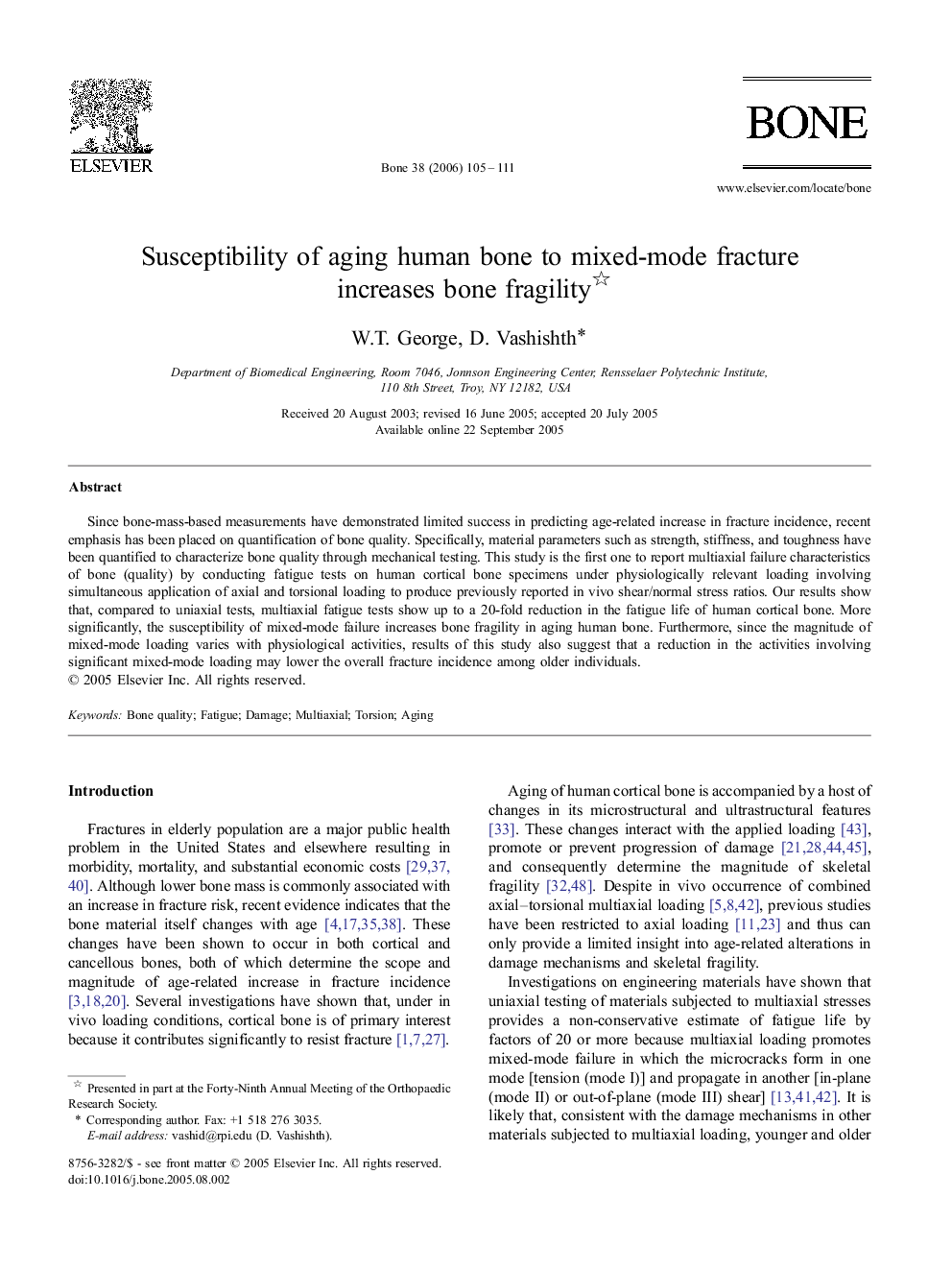| Article ID | Journal | Published Year | Pages | File Type |
|---|---|---|---|---|
| 2782750 | Bone | 2006 | 7 Pages |
Since bone-mass-based measurements have demonstrated limited success in predicting age-related increase in fracture incidence, recent emphasis has been placed on quantification of bone quality. Specifically, material parameters such as strength, stiffness, and toughness have been quantified to characterize bone quality through mechanical testing. This study is the first one to report multiaxial failure characteristics of bone (quality) by conducting fatigue tests on human cortical bone specimens under physiologically relevant loading involving simultaneous application of axial and torsional loading to produce previously reported in vivo shear/normal stress ratios. Our results show that, compared to uniaxial tests, multiaxial fatigue tests show up to a 20-fold reduction in the fatigue life of human cortical bone. More significantly, the susceptibility of mixed-mode failure increases bone fragility in aging human bone. Furthermore, since the magnitude of mixed-mode loading varies with physiological activities, results of this study also suggest that a reduction in the activities involving significant mixed-mode loading may lower the overall fracture incidence among older individuals.
